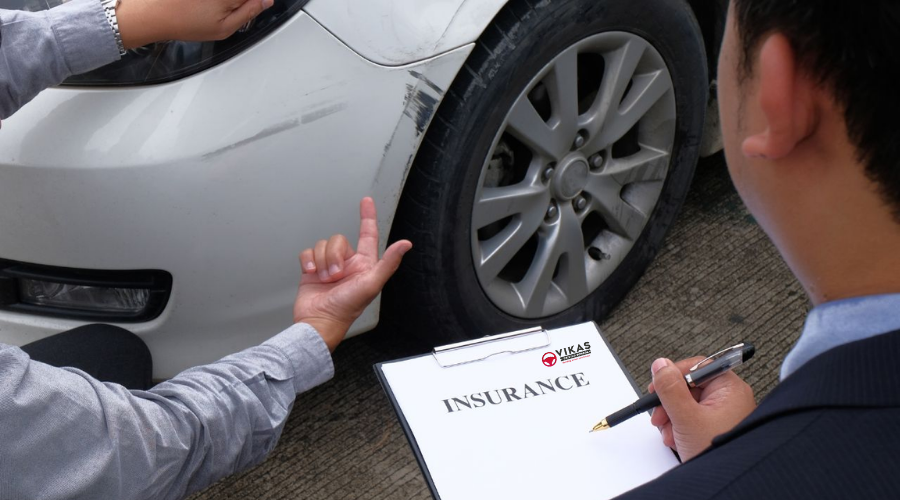As a new driver in Melbourne, you’re hopping on an exciting journey towards independence and mobility. However, along with the thrill of hitting the road comes the responsibility of understanding and securing auto insurance. Auto insurance is not only a legal requirement but also a crucial financial safety net in case of accidents or unforeseen events. In this comprehensive guide, we’ll walk you through the basics of auto insurance for new drivers in Melbourne, ensuring that you make informed decisions to protect yourself, your vehicle, and others on the road. Whether you’re about to take your first driving lesson or are seeking a reputable driving school in Melbourne, this guide will equip you with the knowledge you need.
Understanding Auto Insurance: What Is It?
Auto insurance is a contract between you and an insurance company that provides financial protection in the event of an accident, theft, or damage to your vehicle. In exchange for regular premium payments, the insurance company agrees to cover certain expenses, such as repairs or medical bills, up to the limits outlined in your policy. Here’s a breakdown of the essential components of auto insurance:
1. Types of Auto Insurance Coverage:
Auto insurance policies typically consist of several types of coverage, each serving a specific purpose. As a new driver, you’ll want to familiarize yourself with the following common types:
- Liability Insurance: This is the basic coverage required by law in most states, including Melbourne. It covers the costs of injuries and property damage you may cause to others in an accident where you are at fault.
- Collision Coverage: This coverage pays for the repair or replacement of your vehicle if it’s damaged in a collision with another vehicle or object, regardless of fault.
- Comprehensive Coverage: Comprehensive insurance covers non-collision-related damage to your vehicle, such as theft, vandalism, fire, or damage from natural disasters.
- Uninsured/Underinsured Motorist Coverage: If you’re involved in an accident with a driver who has little or no insurance, this coverage helps pay for your medical expenses and vehicle repairs.
2. Factors That Affect Auto Insurance Rates:
Several factors influence how much you’ll pay for auto insurance as a new driver. These include:
- Age: Younger drivers, especially those under 25, often face higher insurance premiums due to their perceived higher risk.
- Driving Record: A clean driving record with no accidents or traffic violations will generally result in lower premiums.
- Type of Vehicle: The make and model of your car can impact your rates. Expensive or high-performance vehicles may cost more to insure.
- Location: Where you live can affect your rates. Urban areas with higher rates of accidents and theft may lead to higher premiums.
- Coverage Levels: The amount of coverage you choose and your deductible can influence your insurance costs.
3. Mandatory Auto Insurance Requirements in Melbourne:
Melbourne, like the rest of Australia, has specific requirements for auto insurance. You must have at least a minimum level of liability insurance to legally operate a vehicle. The minimum requirements may vary, so it’s crucial to check the current regulations.
4. Optional Coverage:
In addition to the mandatory coverage, you can choose to add optional coverage to your policy for added protection. This might include:
- Rental Car Reimbursement: If your car is in the shop for repairs after an accident, this coverage helps pay for a rental car.
- Roadside Assistance: This coverage provides assistance in case of breakdowns or emergencies on the road.
- Gap Insurance: If your car is financed, gap insurance can cover the difference between your car’s current value and what you owe on your loan if your car is declared a total loss.
5. The Importance of Choosing the Right Coverage:
As a new driver, selecting the right coverage is crucial. While it may be tempting to opt for the minimum required coverage to save money, it’s essential to consider your individual needs and potential risks. In some cases, investing in comprehensive coverage or additional options may be wise to protect your financial well-being in the long run.
Tips for New Drivers:
- Shop Around: Insurance rates can vary significantly between providers. Take the time to compare quotes from multiple insurance companies to find the best coverage at a competitive price.
- Consider a Higher Deductible: Choosing a higher deductible can lower your premium, but make sure you can comfortably cover the deductible in case of a claim.
- Bundle Your Policies: Many insurers offer discounts for bundling auto and home insurance policies, so explore bundling options to save money.
- Maintain a Good Driving Record: Safe driving habits can result in lower premiums over time, so be cautious and responsible on the road.
Conclusion:
Auto insurance is a vital aspect of responsible driving for new drivers in Melbourne. Understanding the basics of coverage, factors that affect rates, and the legal requirements will help you make informed decisions when selecting an insurance policy. While cost is a consideration, remember that adequate coverage is an investment in your financial security and peace of mind. Whether you’re preparing for your first driving lesson or seeking a reputable driving school in Melbourne, integrating insurance knowledge into your driving education is a fundamental step toward becoming a responsible and well-informed driver.
By following these guidelines and staying informed about your insurance options, you can confidently navigate the roads of Melbourne, knowing that you have the protection you need in case the unexpected happens.
Remember, as you embark on your driving journey, safety and responsibility are paramount. Seek professional driving lessons in Melbourne to equip yourself with the skills and knowledge necessary for safe and confident driving. By combining education, responsible driving habits, and the right insurance coverage, you’ll be well-prepared for a successful and secure driving experience.

